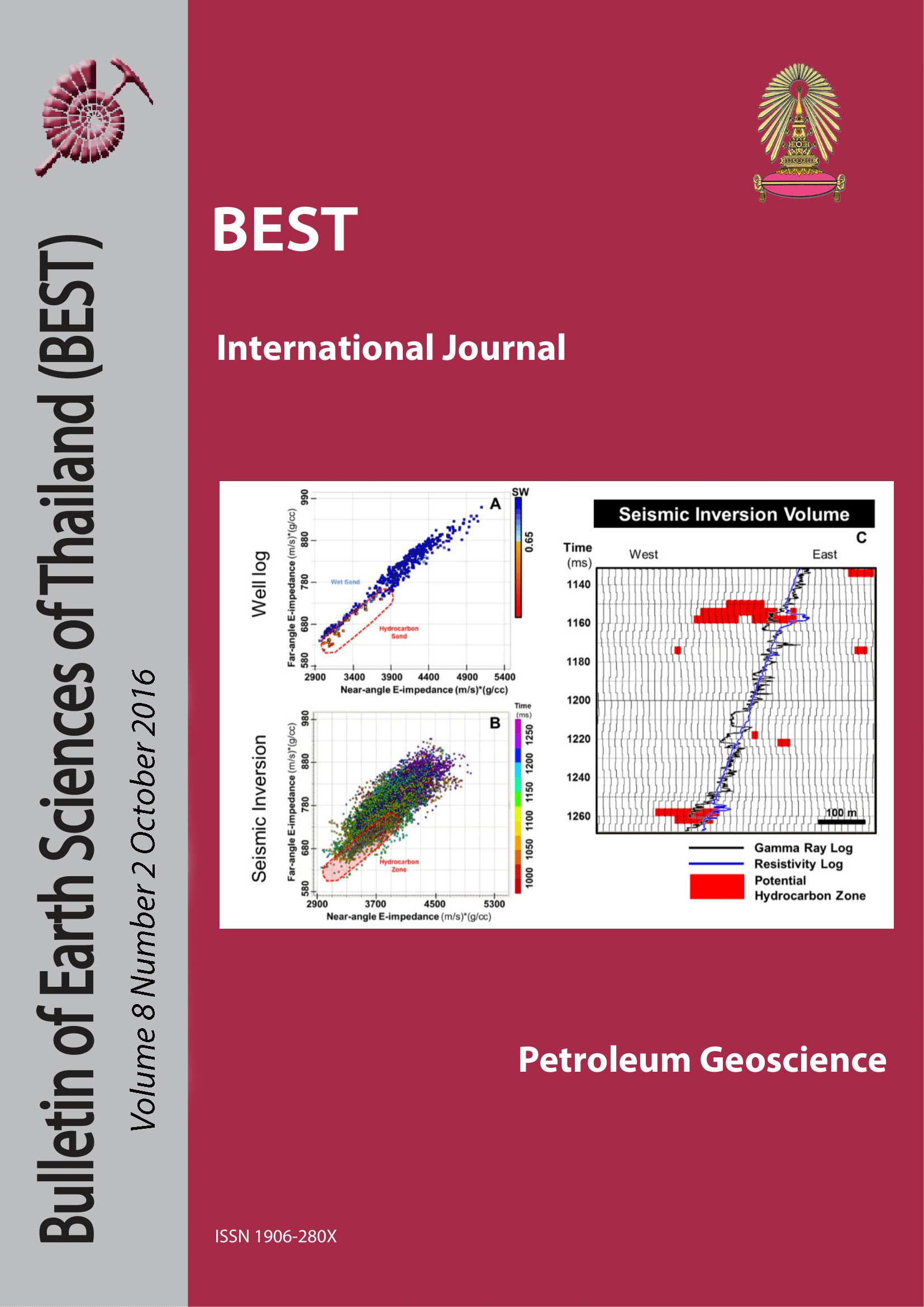RESERVOIR POTENTIAL OF THE SYN-RIFT SUCCESSION IN NORTHWEST PALAWAN, PHILIPPINES
Main Article Content
Abstract
This study focused on identifying depositional environments and their corresponding sedimentary facies to understand implications for reservoir potential in the NW Palawan Basin, Philippines. Rock physics relationships, well-based facies analysis, seismic facies analysis and mapping of depositional sequences identified sedimentary facies deposited as a result of interplay between different depositional settings. Depositional processes were controlled by tectonic activity, relative sea level change, subsidence and sedimentation. The facies change from an alluvial fan on the bounding fault margin that grade into marine facies in the basin axis and to a delta prograding into the basin from the flexural margin. Sedimentary facies change across the graben and reservoir distribution is limited by depositional setting. Reservoir quality in the Malajon-1 well was affected by both compaction and cementation to varying degrees. Potential hydrocarbon-bearing reservoirs of significant thickness and lateral extent were not penetrated by the Malajon-1 well. Reservoirs that appear to be more prospective are found mainly in channels and in deltas.
Article Details

This work is licensed under a Creative Commons Attribution-NonCommercial-NoDerivatives 4.0 International License.
Copyright © 2008 Department of Geology, Faculty of Science, Chulalongkorn University. Parts of an article can be photocopied or reproduced without prior written permission from the author(s), but due acknowledgments should be stated or cited accordingly.
References
Avseth, P, et al., 2005, Rock physics depth trends and anomalies in a North Sea field, Quantitative Seismic Interpretation. Cambridge, Cambridge University Press, 96-101
Branson, D, M., et al., 1997, Hydrocarbon Habitat of the N. W. Palawan Basin, Philippines. IPA Proceedings of the Petroleum Systems of SE Asia and Australasia Conference, pp. 815-828.
Doust, H., and Summer, H., 2007, Petroleum systems in rift-basins-a collective approach in Southeast Asian basins:Petroleum Geoscience, Vol.13, 127-144
Doust, H. and Noble, R. 2008, Petroleum systems of Indonesia, Marine and Petroleum Geology Vol.25, pp 103-129
Hall, R., 1996, Reconstructing Cenozoic SE Asia. In: Hall, R. and Blundell, D. (Eds.), Tectonic Evolution of Southeast Asia. Geological Society of London Special Publication No. 106, 153-184.
Hall, R., 2009, Hydrocarbons basins in SE Asia:understanding why they are there. Petroleum Geoscience, Vol.15, 131-14.
Holloway, N.H., 1982, North Palawan Block, Philippines – its relation to Asian Mainland and role in evolution of South China Sea. The American Association of Petroleum Geologists Bulletin, 66, 9, 1355-1383.
Leeder, M. and Gawthorpe, R.,1987, Sedimentary models for extensional tilt-block/half-graben basins,Geological Society, London, Special Publications, 139-152
Morado, A. A., Jr., and Poblete, R. G. Jr., 1997, Preliminary thoughts on the crustal boundaries in the Northeastern Palawan Area, Philippines. Proceedings, Oil and Gas ’97.
Morado, A. A., Jr., and Poblete, R. G. Jr., 1997, Petroleum Plays in East Palawan, Philippines. Proceedings, Oil and Gas ’97.
Sales, 1997, The petroleum potential of deep- water northwest Palawan Block GSEC 66, Journal of Earth Sciences, Vol.15, Nos 2-3, pp. 217-24.
Williams, et al , 1992a , Geochemical characteristics of Paleogene and Cretaceous hydrocarbon source basins of Southeast Asia. Proceedings of the Southeast Asia Petroleum Exploration Society, Vol.X, Singapore, 35-66.
Williams, H., 1997, Play concepts-northwest Palawan, Philippines, Journal of Asian Earth Sciences, Vol. 15. Nos 2-3, pp 251-273


